Tigers In Contemporary Odisha
We often hear of popular tigers from across India. They have names, personalities and are usually extensively filmed or photographed individual animals. There are superstars of national parks such as Ranthambhore’s ‘Machali’, Pench’s ‘Collarwali’, Kanha’s ‘Munna’, Bandhavgarh’s ‘B2’ and his father ‘Charger’, etc. This trend has caught on even in the South Indian national parks with the increasing visibility of tigers and leopards there. There is a trend of naming regularly seen tigers in areas that receive a chunk of India’s wildlife tourism. Their lives are documented by tourists, researchers, park managers, etc., over the years. These chronicles in still and video images have taught us a lot about the lives of these elusive animals.
Whether tigers or any wild animal should be named or not, is an open debate. There are many downsides to anthropomorphising animals, as ascribing human-like personalities misinforms more than it informs. They certainly do not feel about us the same way we do about them and they couldn’t care less about the names we give them. This is the natural course of life in the wild.
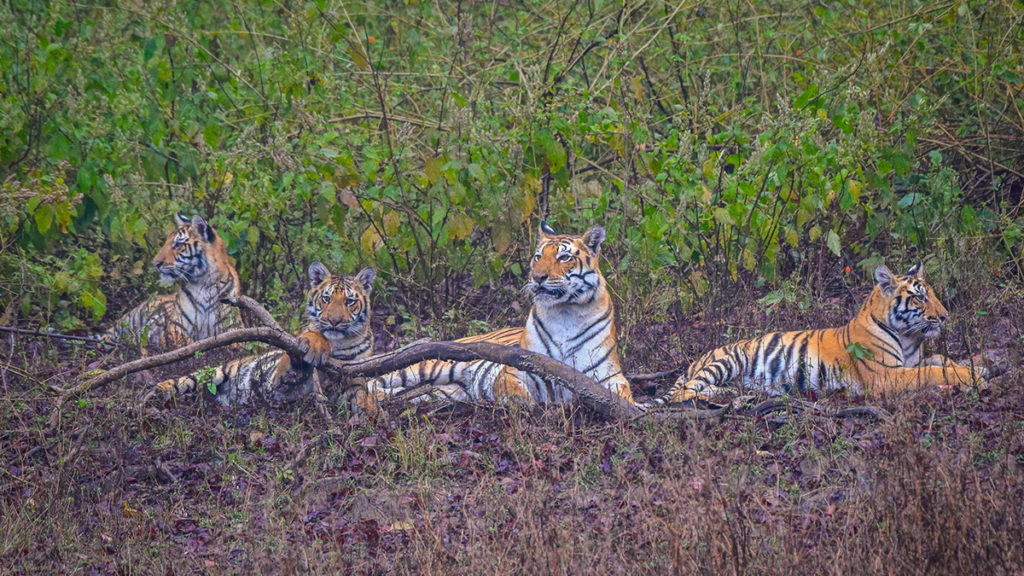
Photo Credit: Aditya Panda.
However in some cases, like in the case of a conflict tiger in Maharashtra who received tremendous attention, the media and concerned citizens gave her a name, ‘Avni’, to draw attention and public empathy to her plight. A movie was recently made, loosely based on her story, called ‘Sherni’. Yet, these famous tigers have played an undeniable role in connecting India’s citizens directly with our wildlife and wildlife habitats. Thanks to these animals, citizens living far from India’s remote forests care and speak up for animals that they might have ‘met’ and ‘known’ as individuals––be it on social media, through documentary films or in the flesh while on safari holidays in these regions which are flagships of India’s wildlife conservation.
Why don’t we see such a trend in Odisha?
The state has lost its prominence of the 1970s and ‘80s as one of the top tiger states of India. In those decades, Odisha used to have well over three hundred tigers, but in the past decade, the state has consistently reported under 30 tigers. Odisha’s forests then were rich in wildlife and had very few human habitations inside them in comparison to present day. Large scale mining, industry and infrastructure projects had not yet intruded into the tiger landscapes at the scale at which they do today. To sustain big cats, the forests of the State had abundant prey like deer and wild pigs, which were not yet poached at the scale they were in the 1990s and 2000s. Through the nineties, there were also large-scale commercial poaching of tigers and leopards in the State. Currently the State does not have a single viable breeding population of tigers. As a result, besides ‘Khairi’ and ‘Kanan’––both wild caught captive tigers––the individual lives of practically no other tiger is known of in the State.
In this piece here, we explore the lives of three tigers – significant in their own ways – in contemporary Odisha as they navigate their tryst with destiny in the State’s tiger landscapes.
Sundari
‘Sundari’ was a tigress in Bandhavgarh Tiger Reserve in Madhya Pradesh. Born in 2015 to a famous tigress called ‘Spotty’––a safari star in the Tala Range of the reserve––Sundari was one of three cubs, all female. Her sisters, ‘Kajri’ and ‘Bhitri’ continue to occupy parts of their mother’s territory in the prey rich Tala area and are established, adult breeding tigresses now.
For Sundari, life had other plans. She was always the most adventurous of the three cubs. She started roaming away from her mother and sisters soon after turning a year old. Cubs usually stay with their mothers till about two years of age. But Sundari liked her space. She would wander by herself and get into frequent fights with her sisters. She routinely went into human habitation outside Tala and boldly killed cattle in daylight. She began maturing into a fine young tigress with tremendous promise for the future of Bandhavgarh.
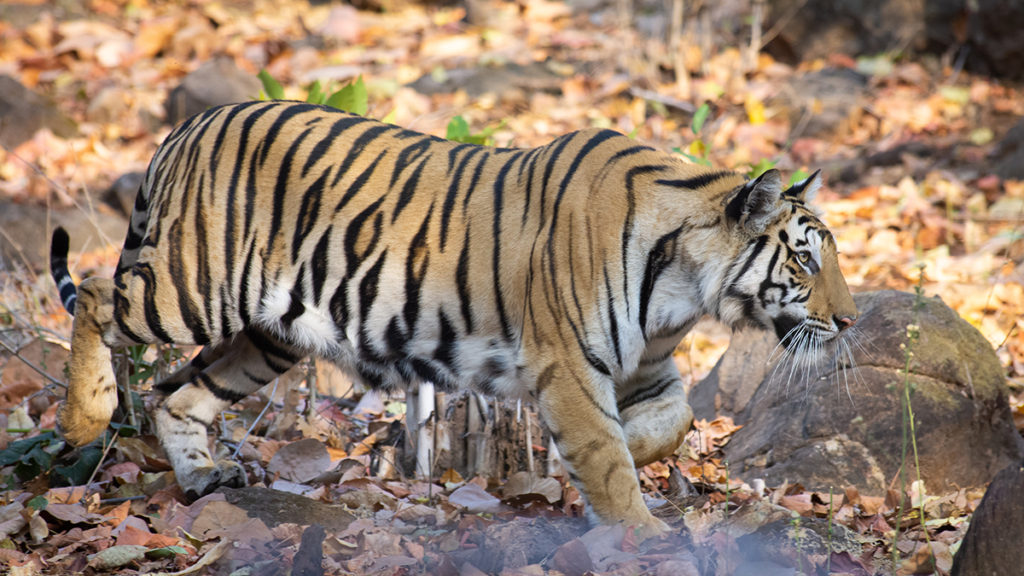
Photo Credit: Aditya Panda
About 700kms to the east of Bandhavgarh, another story was unfolding in the Satkosia Tiger Reserve, Odisha. Satkosia was notified as a tiger reserve only in 2007. By then, much of its tiger population had been exterminated. Comprising the Satkosia Gorge Wildlife Sanctuary and Baisipalli Wildlife Sanctuary that clothe both banks of River Mahanadi along the Satkosia Gorge, Satkosia Tiger Reserve is a very high quality tiger habitat. Unfortunately, most of the valleys in the reserve had been taken over by villages and agriculture through the 1980s and 90s. This had led to loss of natural grasslands and blanks that used to support large populations of chital or spotted deer. Besides the loss of habitat, illicit timber felling, large scale poaching of deer and wild pigs for bushmeat consumption were serious problems well into the early 2000s. All of this had meant that natural prey for tigers, leopards and wild dogs was in serious decline. With a poor prey base, tiger numbers began to rapidly fall. The tigers that remained were forced to take to cattle killing, which had increased simultaneously with the human population, taking over natural habitat meant for wildlife. When tigers kill livestock, they are frequently poisoned by local people in retaliation. A lot of Satkosia’s last few tigers are believed to have been lost this way.
With the tiger population of Satkosia Tiger Reserve down to a single, old tigress, alarm bells had begun to ring about the future of the big cat in the reserve around 2013. Gradually, efforts were made to improve management practices in the reserve. Protection was strengthened and staff shortages filled up. A village called Raigoda, in the core area of the reserve, opted for voluntary relocation. The relocation not only brought them closer to mainstream society and its economic and social benefits, it also freed up a large tract of habitat to return to wildlife. A grassland now occupies the paddy fields of Raigoda and large herds of chital deer graze there.
Once things began looking up at Satkosia, the Government of Odisha along with the Government of Madhya Pradesh and under the guidance of the National Tiger Conservation Authority decided to take the bold step of reintroducing tigers in Satkosia. This would be India’s first interstate tiger translocation programme. Under the programme, six tigers––three males and three females would be brought to Satkosia in a phased manner from tiger reserves of Madhya Pradesh and reintroduced to seed a new foundation population. Madhya Pradesh was chosen not just because it has enough tigers to spare, but also because Odisha’s tiger landscapes being an extension of the Central India Tiger Landscape, it was best to get animals that were genetically closest to Odisha’s original tigers.
In 2018, just before the monsoons would break, a young male tiger, about three years old, was translocated from Kanha Tiger Reserve to Satkosia. Known there as MB2 (Cub number 2 of the Mahabir Tigress), he was first kept in a ‘soft release’ enclosure at Satkosia to help him acclimate to the new habitat before complete release into the wild. He had a GPS collar fitted to help track his post release movements. He appeared to have settled in well and was even seen in the company of the Old Tigress of Satkosia, affectionately called Asha. He was hunting successfully and avoiding human occupied parts of the reserve. The park management, buoyed by this success, decided to expedite getting a second tiger. This time it was a young tigress. Bandhavgarh’s Sundari was chosen to be Satkosia’s tigress. At two and a half years old, she was at the right age for reintroduction. That is the age at which a young tigress sets out to establish her territory.
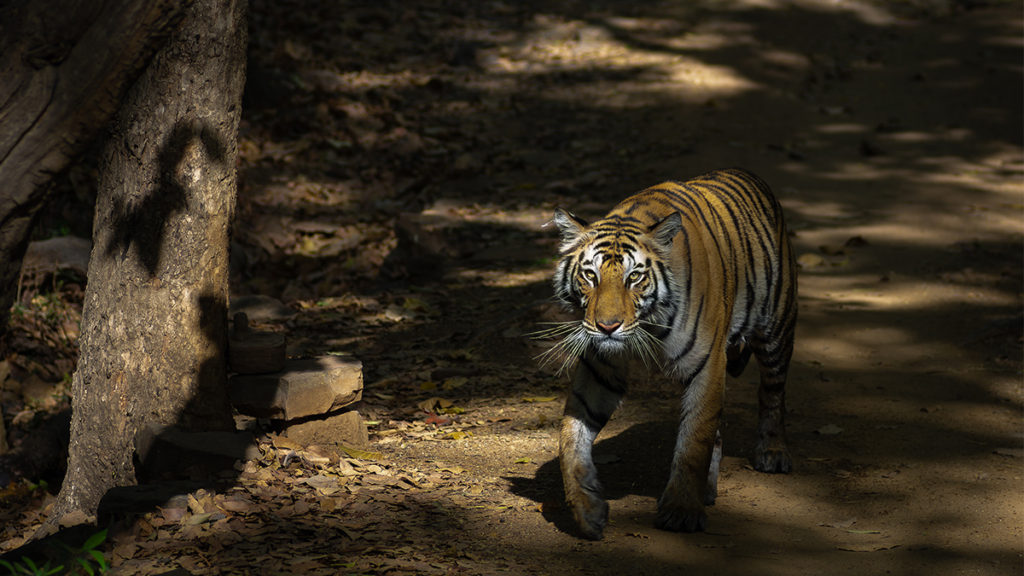
Photo Credit: Aditya Panda
As with Mahabir, things initially seemed fine with Sundari. But something was off. She began frequenting the buffer area of the reserve and other parts where human occupation was high. Perhaps no one had given a thought to the fact that with Old Tigress holding fort over Satkosia’s only undisturbed, prey-rich parts, Sundari would be chased out into the fringes. The male was easily accepted as a potential mate, but Sundari was competition to Old Tigress. Also, perhaps Sundari was the wrong choice of tiger for Satkosia. She was used to roaming in human habitation in Bandhavgarh and killing livestock. That sort of behaviour would certainly not be easily accepted by the communities living in Satkosia who, for at least a couple of generations, have forgotten what it was like to live with tigers. In Bandhavgarh, with its high tiger density and quick conflict redressal mechanisms, communities were a lot more tolerant of tigers amidst them.
In any case, Sundari was in trouble. With frequent interactions with humans, it wasn’t long before she killed a human. Her first victim was accidental. A woman was crouched while washing in a jungle stream and was attacked by Sundari. Humans are not part of the natural diet of tigers. Tigers usually go out of their way to avoid humans and carry a deep fear of our species. But, as it happens in some cases, a human in a crouching or squatting position is sometimes mistaken for four legged prey by a stalking tiger. In such cases, as soon as the tiger realises that it has killed the hated biped form, it leaves the carcass. That is exactly what Sundari did. But her fate was sealed. Local people were furious. They attacked forest department staff and property and held a dharna on the national highway connecting Cuttack and Sambalpur.
It wasn’t long before Sundari killed her second human victim. This time, it was clear that she needed to be captured and put back in the enclosure. She spent over 30 months in it. After great deliberation, it was decided that the best course of action for her would be to send her back to Madhya Pradesh where she is now kept in the tiger rewilding enclosure at Ghorela, Kanha Tiger Reserve. Mahabir, the male, was killed in an unfortunate way when he was caught in an illegal snare trap set by a poacher.
Satkosia is now back to square one with just one remaining tiger. But, this time, the park management and the State Wildlife Wing have some crucial, though very expensive lessons that the experiment with Sundari and Mahabir taught. There is no question that tigers must and will be re-established at Satkosia. Now, it is important that due attention be given while at it to protection, creation of safe and human-habitation free habitats and also to invest in tiger tracking and monitoring capacities of the reserve’s frontline staff.
Asha/ Budhi Baghuni (Old Tigress)
For the first time she was camera trapped in 2011. That was the first ever camera-trapping exercise in the then recently declared Satkosia Tiger Reserve (2007). Till date, she remains the only tiger camera-trapped in Satkosia. That is the tragedy of her life. By the time Satkosia was declared a tiger reserve, its tiger population had gone down drastically––beyond the point of no return. By the time the first camera traps were set out, she was perhaps the only remaining tiger in these forests of the Mahanadi.
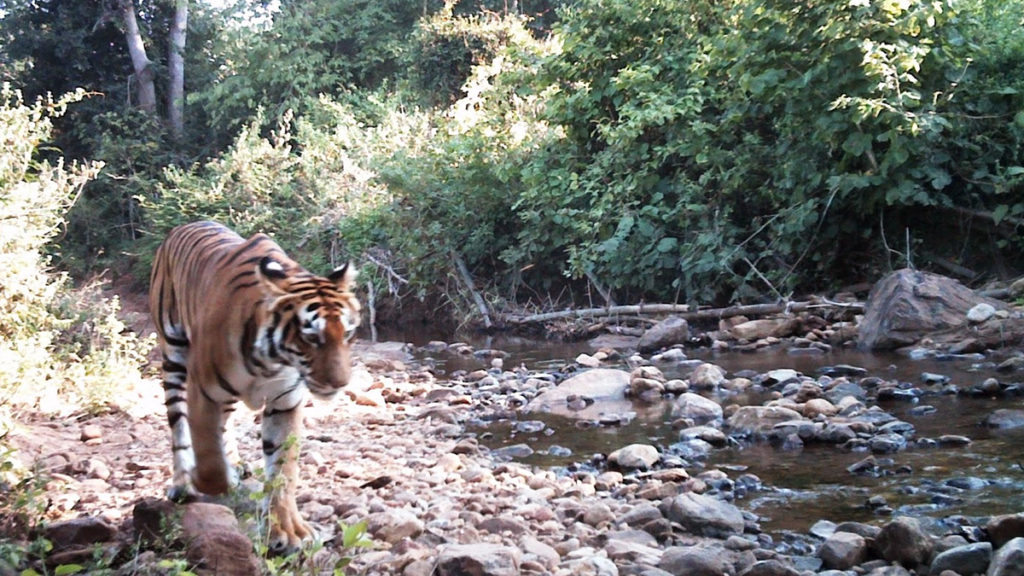
Photo Credit: Satkosia Wildlife Division/Odisha Forest Department
For a short period in 2018-19, two other tigers, translocated from Madhya Pradesh’s Kanha and Bandhavgarh tiger reserves, were sharing her landscape. But, due to unfortunate reasons the male from Kanha was killed in a wire snare set up by a poacher. The female, Sundari, who submitted to Asha’s dominance over the undisturbed, prey rich parts of the reserve, was forced to roam in the human dominated areas and needed to be captured after she killed two people. Sundari was returned to Madhya Pradesh last year and Asha, or Budhi Baghuni, the Old Tigress, remains the only tiger left in Satkosia. She could be called, what in conservation terms is known as an ‘endling’. The last surviving individual of a species. As far as Satkosia is concerned, she is certainly an endling.
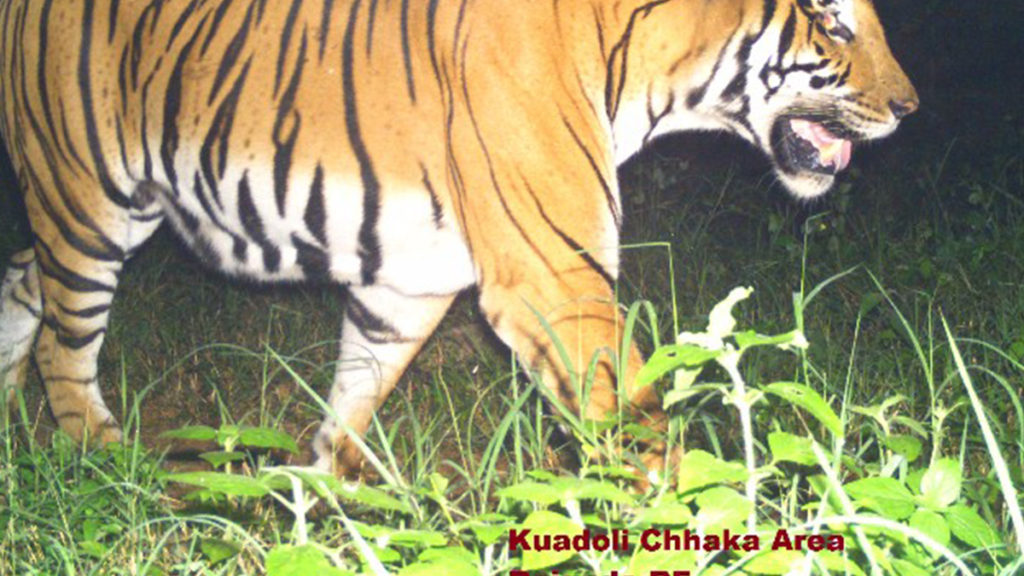
Photo Credit: Satkosia Wildlife Division/Odisha Forest Department
But, it’s not for nothing that she is sometimes called ‘Asha’, or hope. With management practices at Satkosia Tiger Reserve under constant improvement, voluntary village relocation making more prime habitat available for wildlife and improvement in protection, great efforts are being put into setting the stage for the return of a breeding tiger population. If the tiger reintroduction exercise can be resumed soon enough, there is a slim chance that Asha might find a mate again and, perhaps a slimmer chance that she might bless Satkosia with her cubs. If that happens, not only will her species get a new lease of life in Satkosia, the bloodline of Satkosia’s original tigers will be saved forever.
Nandan
In October 2012, a tiger sighting was reported near Khuntuni, close to the Cuttack – Sambalpur highway. Initially, it was dismissed as a rumour. Soon, however, undeniable evidence emerged in the shape of pugmarks in the area. Over the course of the following months, the tiger appeared and disappeared. Evidence would appear, sometimes days, sometimes weeks apart, and then the tiger would seem to vanish. This started happening across Dhenkanal and Cuttack districts. Elephant trackers of the Athagarh Forest Division saw the tiger crossing a narrow road near Mundali and heading towards River Mahanadi. If the tiger would cross the river, Chandaka – Dampara Wildlife Sanctuary was just beyond the opposite bank. Sure enough, some days later firewood collectors from the villages inside Chandaka reported seeing a tiger! It even killed a cow inside the sanctuary. This was the first recorded tiger in Chandaka since the 1960s!
Clearly, this was a dispersing male tiger, young and in his prime, looking to establish his territory in a forest rich in prey and tigresses. Would he find such a forest? It was totally unlikely. Chandaka did not have any tigresses, nor did Kapilash Wildlife Sanctuary nearby. The tiger wouldn’t go to Satkosia––100kms as the crow flies––as he most likely originated from there and must have had his reasons for leaving. Satkosia was bereft of any breeding population of tigers. By now this tiger’s progress across the human dominated landscape between Satkosia and Bhubaneswar, had become apparent: the tiger would most likely land up at Nandankanan Zoo, sensing the presence of its population of captive tigresses. Nandankanan, after all, shared a boundary with Chandaka.
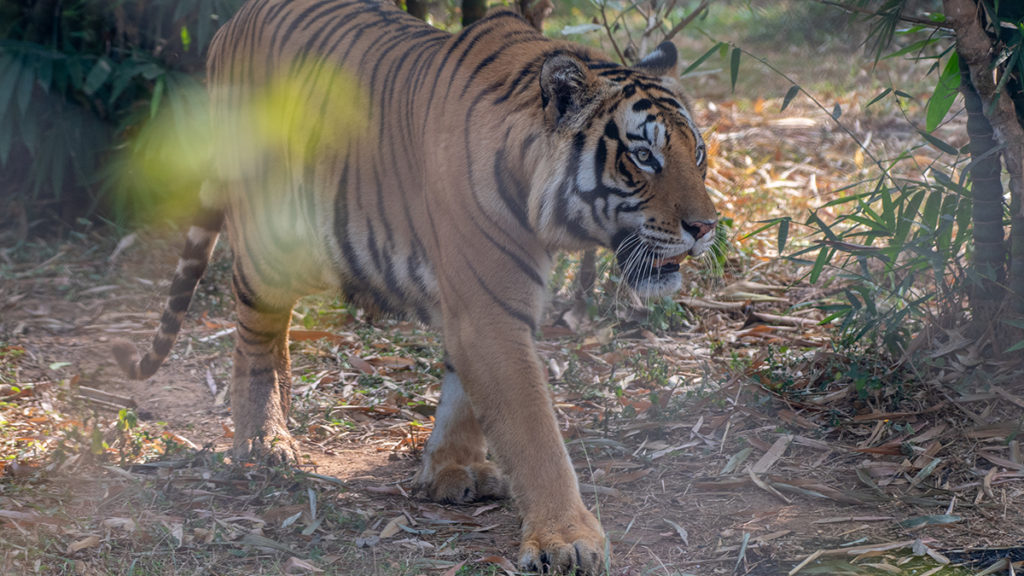
Photo Credit: Aditya Panda
Sure enough, on the evening of Makar Sankranti (January), 2013, the tiger visited a private farm house near Nandankanan. For three months after that first detection within Bhubaneswar city, the tiger remained in the vicinity of the zoo. He was constantly exploring the area, even crossing the busy NH-5 near Janla before returning back to Nandankanan Wildlife Sanctuary. Once in a while he would be seen by truck drivers along the Barang-Chandaka route. But most of the time he managed to remain undetected. He was likely feeding off the spotted deer and wild pigs that inhabit the area. There wasn’t a single reported case of attacks on humans or livestock. The tiger was doing what tigers do best in human dominated landscapes––remaining low profile, avoiding conflict, surviving. He was set on avoiding humans and finding habitat with tigresses.
One of the zoo tigresses perhaps came into oestrus around that time. The tiger began hanging around her enclosure. By then he had been captured on camera traps set by the zoo authorities and was regularly caught on CCTV security cameras as well. That’s when the zoo authorities decided to bait him and trap him. He was lured into one of the enclosures. The gates were shut. But he was a wild tiger. He wouldn’t take well to captivity. In no time the tiger had scaled the 14ft fence of the enclosure and was out again! Sadly for him, the lure of tigresses was too hard to resist and he continued to occupy the area. He was captured again, this time he was kept in an enclosure that was better secured.
This sort of capture was totally against every law and policy of wildlife conservation. A healthy, wild tiger that was not engaged in any conflict with humans cannot be captured in India and certainly not for the purpose of being kept in a zoo. Such animals are of priceless conservation value and every effort must be made to keep them in the wild, in natural habitat so that they can continue to serve their ecological function. Wildlife conservationists were outraged at this and demanded that he be released. The National Tiger Conservation Authority advised the State government to have the tiger fitted with a GPS tracking collar and released in Satkosia or Similipal tiger reserves. Satkosia was on the verge of local tiger extinction. Similipal has now been recommended for artificial tiger supplementation because of the paucity of breeding male tigers in its population. Some adamant, influential officers from the zoo administration, however, refused to part with an animal that they believed was of more use for zoo breeding!
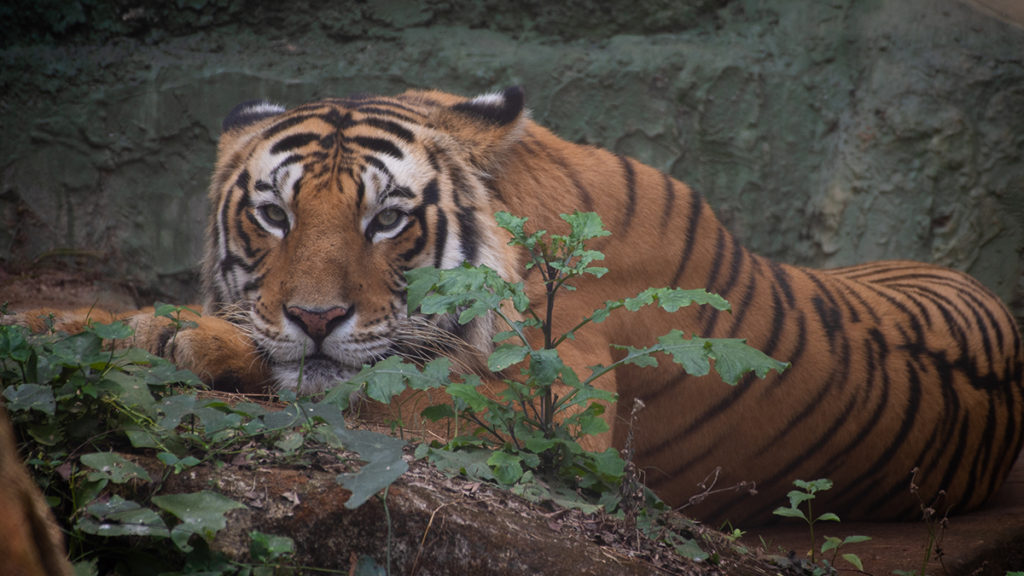
Thus, a fine wild tiger, unimaginatively named ‘Nandan’ was touted as “voluntarily” joining the zoo. A similar line had been touted in the 1960s when Chandaka’s last wild tigress (called ‘Kanan’) had jumped into a moated enclosure to join a male tiger for mating when she didn’t find one in the wild––unwittingly trapping herself for life.
Nandan now languishes in the zoo. His spirit nearly broken as noisy tourists stare and scream at him. He has fathered cubs, though. Cubs who will continue to languish in zoos. Nandan would have been far more useful to the purpose of tiger conservation had he fathered cubs in Satkosia or Similipal. This, especially so when Odisha now has barely only a single viable tiger population left: Similipal. Even that population might not survive long without artificial supplementation of tigers from Central India, as has been recommended by the report of the All India Tiger Estimation Exercise, 2018.
Visit www.adityapanda.in to know more.
Author: Aditya panda
The author is a well-known wildlife conservationist and naturalist. He currently serves as Honorary Wildlife Warden, Angul District. Professionally he operates and leads wildlife photography and safari operations across India.
Read more from author

